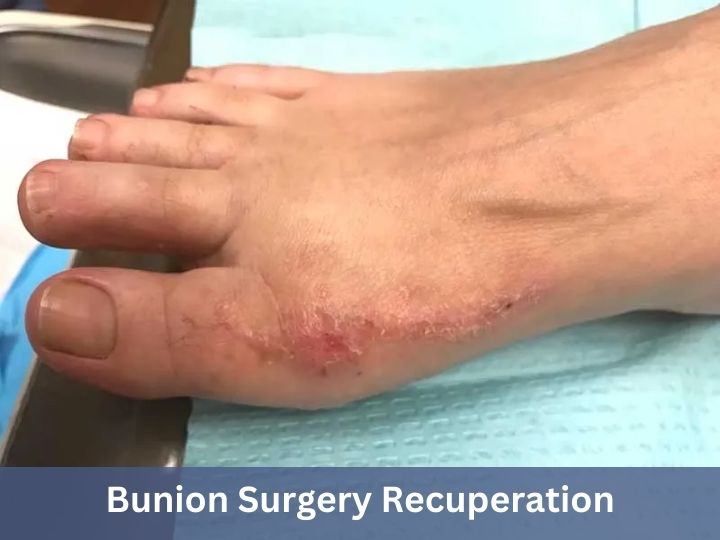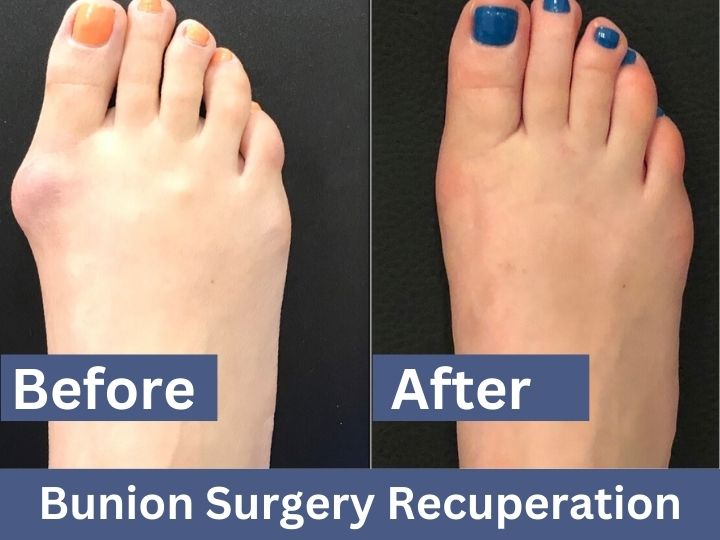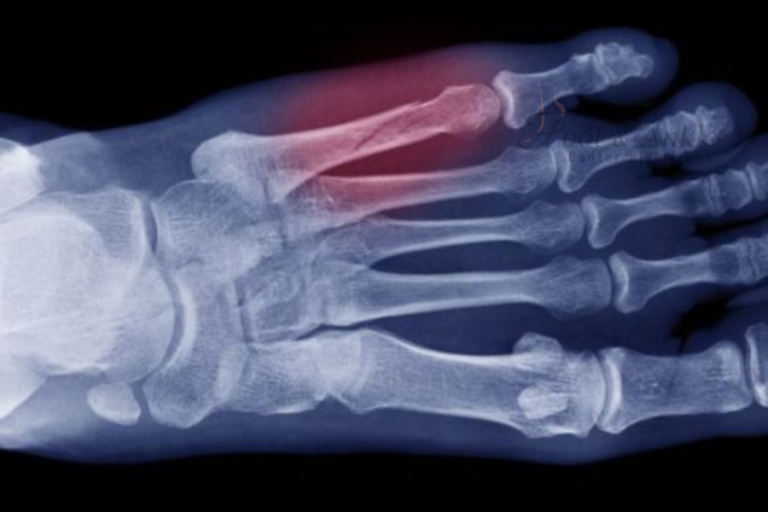Summary of Bunion Surgery Recuperation
Bunion surgery, or bunionectomy, realigns the big toe joint to alleviate pain and improve foot function. Recovery involves three phases: immediate post-surgery (weeks 1-2) with rest, elevation, and pain management; intermediate recovery (weeks 3-6) with increased mobility and physical therapy; and long-term recovery (weeks 7-12) focusing on transitioning to regular footwear and resuming activities. Potential complications include infection, swelling, and rare nerve damage, which can be minimized with proper care. Adhering to medical advice, managing pain, and engaging in physical therapy are essential for a smooth recovery. With patience, most patients regain mobility and comfort within a few months.
Introduction
Bunion surgery, also referred to as a bunionectomy, is an extremely common surgery intended to realign the big toe joint. It may alleviate pain and improve foot function, but successful surgery depends on how well the recovery process is understood. The article will give a complete overview of the recuperation phase following bunion surgery: the stages of recovery, possible complications, and some helpful tips to make the process of healing easier.
Overview of Bunion Surgery Recuperation
A bunion is a nonsymmetrical pathological bump of the bone that usually appears at the bottom of the big toe. Usually, such conditions require surgical intervention because very often, conservative treatments bring inadequate relief. Depending on the severity and other individual factors, the type of surgical procedure may range from minimally invasive to one that would be more extensive in order to correct the bunion.
Types of Bunion Surgery
- Osteotomy: Involves cutting and realigning the bone to correct the deformity.
- Exostectomy: Removes the bony bump without realigning the toe.
- Arthrodesis: Fuses the bones in the joint, often necessary for severe cases.
The type of surgery performed will influence the recovery timeline and rehabilitation process.
Immediate Post-Surgery Care (Weeks 1-2)
Week 1: Initial Recovery
The first week is critical for recovery. Patients should focus on:
- Resting: Limit activities to allow healing.
- Elevation: Keep the foot elevated to reduce swelling, ideally for at least 55 minutes each hour.
- Pain Management: Use prescribed pain medications and apply ice packs as directed.
During this period, patients are typically advised to avoid putting weight on the affected foot. A special post-operative shoe or boot is usually provided to protect the surgical site.
Week 2: Wound Care and Follow-Up
By the second week, patients often return for a follow-up appointment where:
- Stitches are removed: This typically occurs around 10–14 days post-surgery.
- Wound care continues: Keeping the surgical area clean and dry is essential to prevent infection.
- Gradual Weight Bearing: Depending on the surgeon’s advice, patients may begin bearing weight on their heel while using crutches or a walker.
Intermediate Recovery (Weeks 3-6)
Weeks 3-4: Gradual Increase in Activity
As recovery progresses:
- Increased Mobility: Patients can start walking with assistance and gradually increase activity levels. Low-impact exercises may be introduced under guidance.
- Physical Therapy: Some patients may begin physical therapy to restore mobility and strength in the foot.
It’s crucial to listen to your body during this phase; any significant pain or discomfort should be reported to your healthcare provider.
Weeks 5-6: Transitioning Back to Normal Activities
By this stage:
- Full Weight Bearing: Most patients can transition to full weight-bearing activities while wearing a supportive shoe.
- Return to Daily Activities: Patients often resume light daily activities but should avoid high-impact sports until cleared by their surgeon.
Long-Term Recovery (Weeks 7-12)
Weeks 7-8: Resuming Normal Footwear
At this stage:
- Patients can typically transition back into regular athletic shoes, though wider or half-size larger shoes may be needed due to residual swelling.
- Continued physical therapy may enhance strength and flexibility.
Weeks 9-12: Monitoring Progress
By week 12:
- Patients should experience significantly improved mobility and reduced pain levels.
- Regular follow-ups with the surgeon are essential to monitor healing progress and address any lingering concerns.
Potential Complications
While most patients recover smoothly, complications can arise, including:
- Infection: Proper wound care minimizes this risk.
- Persistent Swelling: Swelling may last for several months post-surgery.
- Nerve Damage: Rarely, surgery may cause numbness or tingling in the toes.
Patients should remain vigilant for signs of complications such as increased pain, redness, or drainage from the surgical site. Contact your healthcare provider immediately if these occur.
Tips for a Smooth Recovery
- Follow Medical Advice: Adhere strictly to your surgeon’s post-operative instructions regarding activity levels and wound care.
- Manage Pain Effectively: Use prescribed medications as directed and consider complementary therapies like ice packs or elevation.
- Engage in Physical Therapy: Actively participate in therapy sessions to regain strength and flexibility.
- Be Patient: Understand that full recovery can take several months. Give your body the time it needs to heal properly.
Conclusion
Bunion surgery can significantly improve quality of life by alleviating pain and restoring foot function. However, understanding the recuperation process is vital for achieving optimal results. By closely following medical guidance and adopting proactive recovery strategies, patients can navigate their post-operative journey effectively. With patience and care, most individuals will find themselves back on their feet—pain-free—within a few months after surgery.





